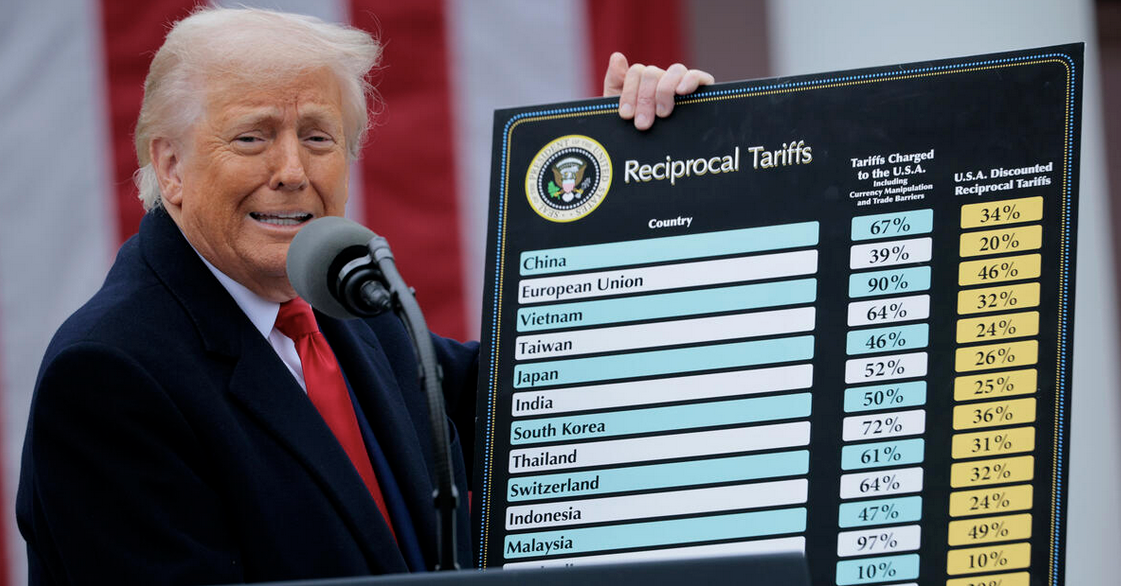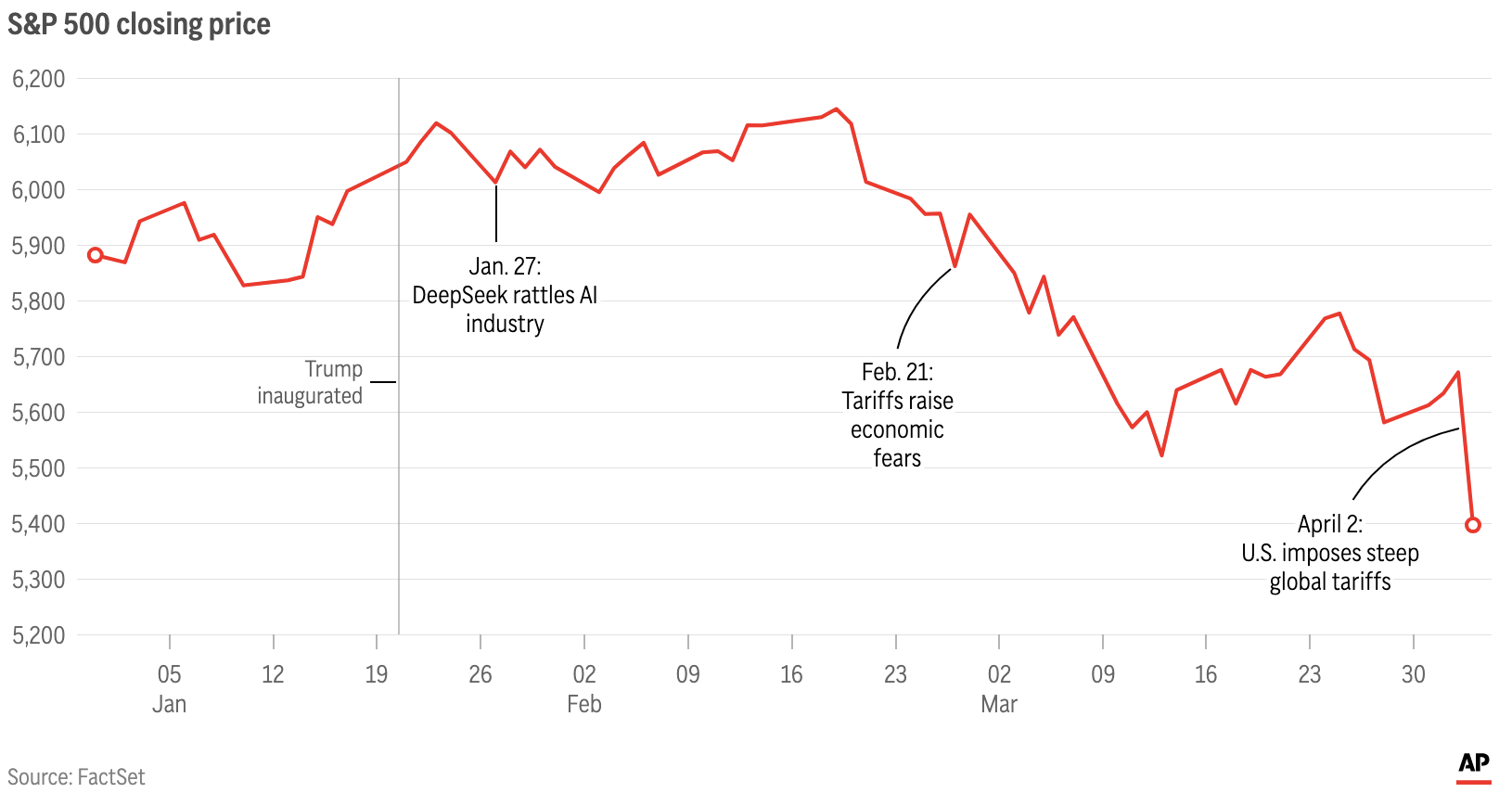On April 2, 2025, Donald Trump unveiled new, vast tariff hikes, the likes of which haven’t been seen in the US since the 1930s and the Smoot-Hawley Tariff act. “Liberation Day” as Trump called it “will forever be remembered as the day American industry was reborn, the day America’s destiny was reclaimed, and the day that we began to make America wealthy again.” The stock market immediately responded, with the DOW, S&P 500, and NASDAQ all dropping roughly 10% by close on Friday, April 4. Let’s take a look at a historic move that economists are calling “indescribably crazy”, “masochistic”, and “sheer, malignant stupidity”.
On Wednesday, Donald Trump signed Executive Order 14256, which formally declares a national emergency and gives Trump an insane amount of authority over tariffs. Using this authority, Trump imposed a baseline tariff of 10% for all countries, and individualized tariffs for 60 countries. These include:
And a whole lot more. Notably, there are a few big names missing off of the list. Mexico and Canada managed to avoid this round of tariffs, but they are already subject to 25% on goods that aren’t compliant with the United States-Mexico-Canada Agreement. Russia was kept off because they already had pre-existing sanctions due to the war in Ukraine, according to the White House and Russian state media. North Korea, Cuba, and Belarus have avoided tariffs as well, once again due to already high sanctions.

The official answer was posted by the Office of the U.S. Trade Representative. Simply put, it’s the country’s trade deficit divided by its exports to the United States times 1/2. Now you might be thinking “gosh, this seems really simple! I thought making tariffs truly reciprocal and match dollar for dollar would be really hard, considering the complexities of international trade and foreign economies.”
You’d be correct. Paul Krugman, Nobel Prize winning economist, points out that Trump’s calculations only considers trade in GOODS, and not trade in SERVICES, for example IT support. Considering the USA has been a service based economy since the 50’s/60’s, this is one of many egregious mistakes with the way these tariffs were calculated. Even the majority of the economists referenced in the Office of the U.S. Trade Representative’s blog post have spoken out, basically stating that their work is not being applied correctly by the administration. The disconnect between economists’ opinions on the method and the similarities to methods produced by chatGPT, if asked, have led to speculation that the formula is made by the AI chatbot. Regardless of how the tariffs were created, the results have even top Trump donors scared of what’s to come next.
Well, put quite simply, it’s gonna hurt. A high school level economics class would teach you that tariffs raise prices, which seems counterproductive to Trump’s campaign promises. Jerome Powell, chairman of the federal reserve, said these tariffs will likely lead to higher inflation and slow economic growth. Stock markets took a major hit already, and JP Morgan raised the odds of a recession to 60%. And this is likely the tip of the iceberg. China announced they were enacting retaliatory tariffs of 34% on all US products, and so far they’re the only ones to do so, but that will change in the coming days as more countries are expected to announce their own. Even if all these tariffs are dropped tomorrow, the damage to America’s image on the world stage has been done. The USA may have lost its status as a reliable and safe trading partner, forever.

Some have speculated this is some sort of power play, others may try to reframe these actions as negotiation tactics, but the reality is much simpler than that. Trump’s position on tariffs has been arguably the most consistent position he’s had. He’s been vocal about this for nearly 40 years. He wants to bring manufacturing jobs back to the US, but a shift like that takes a long time. Economists argue that tariffs aren’t guaranteed to do so, and even if it does the jobs may not be worth the pain. Trump’s essentially betting the US economy that he is right, and that all the experts are wrong.
I’ll leave it to u/Zeraphant to get into the speculative portions about what happens next but I will note; Despite Peter Navarro, Trump’s top trade advisor, explicitly stating that these tariffs were NOT negotiating tactics, Trump and others have contradicted this position. He may back out, but significant damage has already been done.